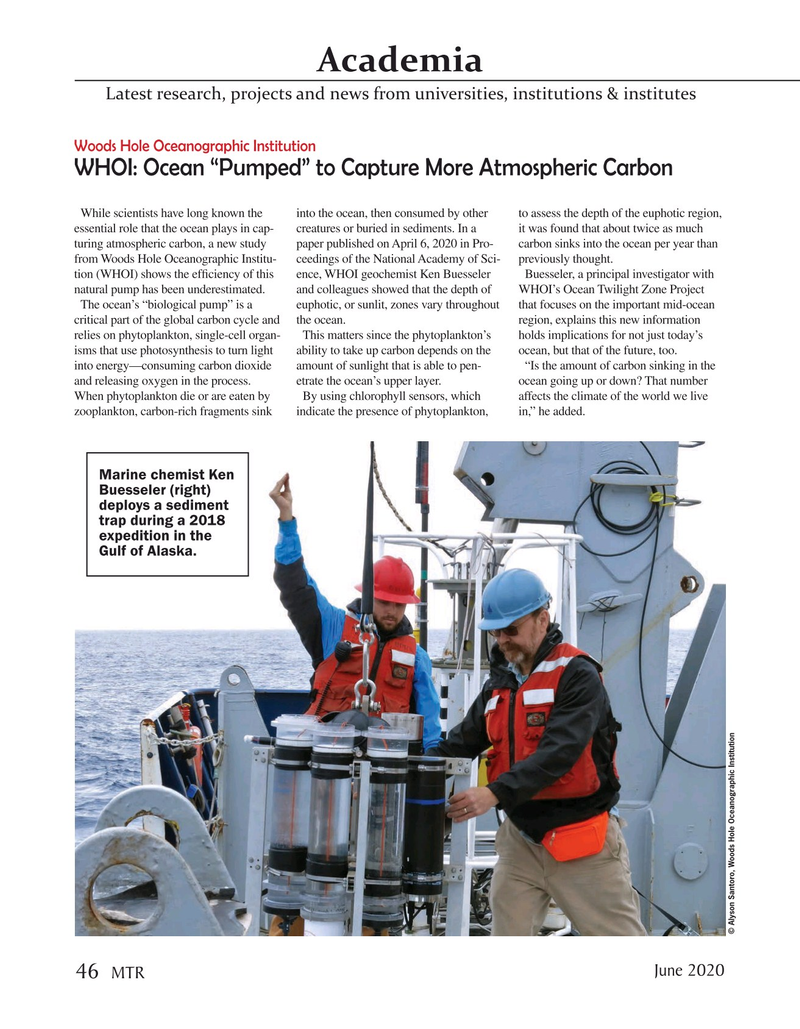
Page 46: of Marine Technology Magazine (June 2020)
Read this page in Pdf, Flash or Html5 edition of June 2020 Marine Technology Magazine
Academia
Latest research, projects and news from universities, institutions & institutes
Woods Hole Oceanographic Institution
WHOI: Ocean “Pumped” to Capture More Atmospheric Carbon
While scientists have long known the into the ocean, then consumed by other to assess the depth of the euphotic region, essential role that the ocean plays in cap- creatures or buried in sediments. In a it was found that about twice as much turing atmospheric carbon, a new study paper published on April 6, 2020 in Pro- carbon sinks into the ocean per year than from Woods Hole Oceanographic Institu- ceedings of the National Academy of Sci- previously thought. tion (WHOI) shows the effciency of this ence, WHOI geochemist Ken Buesseler Buesseler, a principal investigator with natural pump has been underestimated. and colleagues showed that the depth of WHOI’s Ocean Twilight Zone Project
The ocean’s “biological pump” is a euphotic, or sunlit, zones vary throughout that focuses on the important mid-ocean critical part of the global carbon cycle and the ocean. region, explains this new information relies on phytoplankton, single-cell organ- This matters since the phytoplankton’s holds implications for not just today’s isms that use photosynthesis to turn light ability to take up carbon depends on the ocean, but that of the future, too. into energy—consuming carbon dioxide amount of sunlight that is able to pen- “Is the amount of carbon sinking in the and releasing oxygen in the process. etrate the ocean’s upper layer. ocean going up or down? That number
When phytoplankton die or are eaten by By using chlorophyll sensors, which affects the climate of the world we live zooplankton, carbon-rich fragments sink indicate the presence of phytoplankton, in,” he added.
Marine chemist Ken
Buesseler (right) deploys a sediment trap during a 2018 expedition in the
Gulf of Alaska. © Alyson Santoro, Woods Hole Oceanographic Institution
June 2020 46
MTR

 45
45

 47
47
